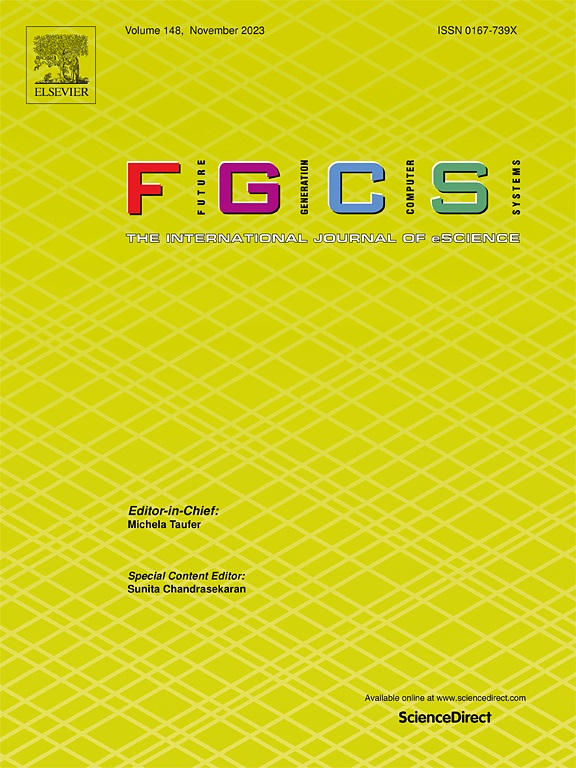基于密集连接时空GNN和q -学习的微服务资源自动伸缩
IF 6.2
2区 计算机科学
Q1 COMPUTER SCIENCE, THEORY & METHODS
Future Generation Computer Systems-The International Journal of Escience
Pub Date : 2025-05-28
DOI:10.1016/j.future.2025.107909
引用次数: 0
摘要
自动扩展技术使云原生系统能够通过向外或向内扩展来适应动态工作负载变化,而无需人工干预。然而,当面对突发和不可预测的工作负载时,确定需要扩展哪些服务和评估所需的资源量变得特别困难,特别是对于难以准确量化的复杂时变服务依赖关系。为了在服务水平协议(sla)约束下,自适应准确地评估不同服务在动态工作负载下的资源需求,最大限度地降低成本,提出了一种基于密集连接的时空图神经网络(STGNN)与q学习相结合的微服务资源自动伸缩解决方案(AGQ)。AGQ将相互依赖的微服务建模为图结构,将实时监控的资源状态数据集成到每个节点的特征向量中。通过引入基于密集连接的STGNN模型,增强了特征信息的捕获能力,便于梯度传播。然后,引入基于密集连接的STGNN模型,增强其特征信息捕获和梯度传播能力,更准确地预测未来资源使用情况。最后,采用强化学习q -学习,同时依靠历史经验和STGNN模型的预测,有效地评估调度策略,优化资源分配。实验结果表明,协同优化策略AGQ能更好地适应服务依赖关系的变化,更准确地管理资源。与几种先进的方法相比,AGQ具有更高的成本效率和更低的SLA违反率。本文章由计算机程序翻译,如有差异,请以英文原文为准。
Autoscaling of microservice resources based on dense connectivity spatio-temporal GNN and Q-learning
Autoscaling technology enables cloud-native systems to adapt to dynamic workload changes by scaling outward or inward without manual intervention. However, when facing sudden and unpredictable workloads, it becomes particularly difficult to determine which services need to be scaled and to assess the amount of resources required, especially for complex time-varying service dependencies that are difficult to accurately quantify. To adaptively and accurately evaluate the resource requirements of different services under dynamic workloads and minimize costs under the constraints of service level agreements (SLAs), a microservice resource autoscaling solution (AGQ) that combines a Spatio-temporal Graph Neural Network (STGNN) based on dense connections with Q-learning is proposed. AGQ models interdependent microservices as a graph structure, integrating real-time monitored resource status data into feature vectors for each node. By introducing the dense connection-based STGNN model, it enhances the ability to capture feature information and facilitates gradient propagation. Then, the dense connection-based STGNN model was introduced to enhance its ability to capture feature information and gradient propagation, for more accurately predicting future resource usage. Finally, reinforcement learning Q-learning is adopted to effectively evaluate scheduling strategies and optimize resource allocation by simultaneously relying on historical experience and the predictions from the STGNN model. The experimental results show that the collaborative optimization strategy AGQ can better adapt to changes in service dependency relationships, more accurately manage resources. AGQ achieve superior cost efficiency and lower SLA violation rate compared to several advanced methods.
求助全文
通过发布文献求助,成功后即可免费获取论文全文。
去求助
来源期刊
CiteScore
19.90
自引率
2.70%
发文量
376
审稿时长
10.6 months
期刊介绍:
Computing infrastructures and systems are constantly evolving, resulting in increasingly complex and collaborative scientific applications. To cope with these advancements, there is a growing need for collaborative tools that can effectively map, control, and execute these applications.
Furthermore, with the explosion of Big Data, there is a requirement for innovative methods and infrastructures to collect, analyze, and derive meaningful insights from the vast amount of data generated. This necessitates the integration of computational and storage capabilities, databases, sensors, and human collaboration.
Future Generation Computer Systems aims to pioneer advancements in distributed systems, collaborative environments, high-performance computing, and Big Data analytics. It strives to stay at the forefront of developments in grids, clouds, and the Internet of Things (IoT) to effectively address the challenges posed by these wide-area, fully distributed sensing and computing systems.

 求助内容:
求助内容: 应助结果提醒方式:
应助结果提醒方式:


